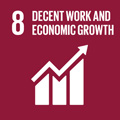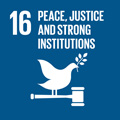- Docente: Emilio Tagliavini
- Credits: 6
- Language: English
- Moduli: Teresa Quarta (Modulo 1) Alessandro Gesuato (Modulo 2) Emilio Tagliavini (Modulo 3)
- Teaching Mode: Traditional lectures (Modulo 1) Traditional lectures (Modulo 2) Traditional lectures (Modulo 3)
- Campus: Bologna
-
Corso:
Second cycle degree programme (LM) in
Chemical Innovation and Regulation (cod. 5701)
Also valid for Second cycle degree programme (LM) in Chemical Innovation and Regulation (cod. 5701)
-
from Oct 02, 2024 to Oct 11, 2024
-
from Jan 20, 2025 to Jan 23, 2025
-
from Dec 16, 2024 to Mar 06, 2025
Learning outcomes
At the end of the activity the student will be aware of the most important IT tools useful to manage, elaborate, present and communicate scientific data. Communication capability will be further improved gaining basic knowledge of the national language (Italian, Portuguese, Spanish or Catalan). The acquired IT skills will find exploitation in training for preparation of research projects and in retrieval of scientific information.
Course contents
The CU will be made of three modules with the following contents:
- Intensive “survival” language course
Students will be trained to understand and use a few simple words related to the most common activities of living, accessing public transportation, orientation in urban environment, food and dink in one of the languages of the ChIR consortium (Portuguese, Spanish, Catalan, Italian) either written or spoken. The will become familiar with the most fundamental grammatic rules of the language.
- IT tools
Chemical informatics provide the tools to acquire, organize, and evaluate data, yielding new insights for further chemical research. The purpose of this module is to provide the students with basic knowledge of spreadsheets or free computer programs to data analysis, or of databases for compounds properties or bibliographic research
- Research skills
Introduction to the general characteristics of a R&ID project: General, responsibilities and report Planning
Project Budget: main aspects
Control and monitoring a Project
Exploitation of the results
Readings/Bibliography
Lecture notes will be available for students.
Additional bibliography: N.A.
Teaching methods
In-class exercises and activities. Group working. Discussion of case-study example
Assessment methods
Each module is assessed independently through homework assignments or written assignment or practical assignment.
The Curricular Unit grade will be the arithmetic mean of grades from the three modules.
Teaching tools
Videoprojection
IT laboratory
Office hours
See the website of Emilio Tagliavini
See the website of Teresa Quarta
See the website of Alessandro Gesuato
SDGs




This teaching activity contributes to the achievement of the Sustainable Development Goals of the UN 2030 Agenda.
